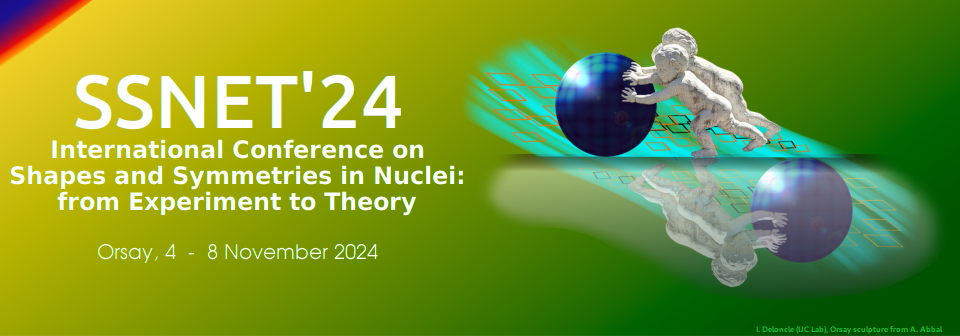Orateur
Description
Absolute transition strengths between excited states yield fundamental information on nuclear structure. These observables can be determined from level lifetimes. The recoil distance Doppler-shift (RDDS) technique employing so-called plunger devices provides a valuable method for the determination of lifetimes in the picosecond range and has been in the focus of our Cologne group since many years.
In this talk, new results from RDDS measurements of our group especially in tellurium isotopes close to neutron midshell and neutron-deficient nuclei in the A=170 region are discussed. Special emphasis is paid to the evolution of collectivity including hints for shape coexistence. In the tellurium isotopes, among other results, also lifetimes of excited $0^+$ states were measured allowing the calculation of $\rho^2(E0)$ strengths that are indicators of the mixing of coexisting structures. In the A=170 region, signatures for a structural change with decreasing neutron number were found that cannot be reproduced with nuclear models so far. Further, we will discuss recent experiments with the RDDS technique on neutron-rich nuclei in the A=40-50 region with respect to the evolution and a possible weakening of the N=28 shell closure.
We will also present our latest developments of the RDDS technique with respect to the application with very different kinematic conditions and reactions techniques, e.g., multinucleon transfer, fusion-evaporation reactions and direct reactions, also employing radioactive beams, and the required detection techniques to identify the reaction products. The related recoil velocities of the reaction products range from few percent of the speed of light up to the relativistic regime with v/c ≈ 60%. For this purpose, our group developed sophisticated plunger devices adopted to the respective spectrometers and beam geometries.
Funded by the German Research Foundation (DFG), grant No. FR 3276/3-1

